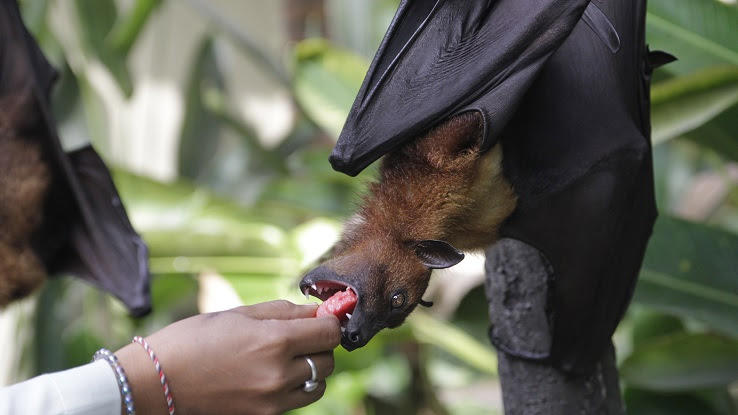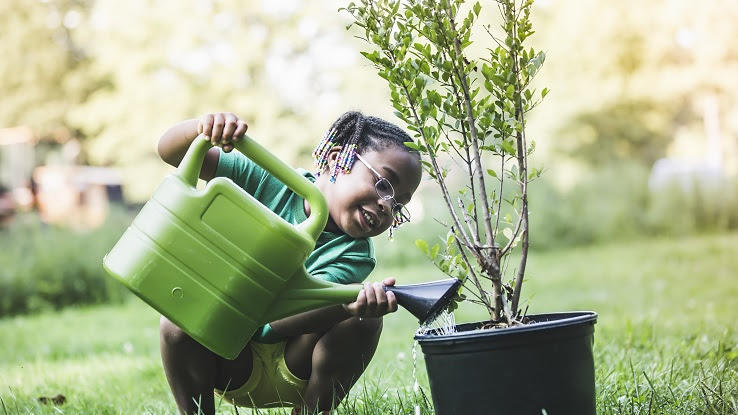Why Are Bats Vital to Our Ecosystems, and How Can We Help Them?

Usually, getting attention from the media can help an animal population out when it’s in trouble. For bats, it’s sort of done just the opposite. Throughout history, bats’ frequent association with vampires, diseases, attacks and even the spookiness of Halloween has made the winged creatures some of the most misunderstood animals on planet Earth.
But these myths are just that — myths. Bats are actually very valuable and essential members of worldwide ecosystems, and some of these biological communities would collapse if bats didn’t exist in them. Unfortunately, bat populations around the world are growing ecologically threatened, but there’s still time to save these adorable creatures. To celebrate International Bat Night, we’re taking a look at the important role these flying mammals play in our world, along with steps we can take to help them out.
Why Are Bats Vital to Our Ecosystem?

Bats play a number of key roles in the natural world, and their actions help keep our environment healthy. These creatures are natural gardeners that we might not realize we need — bats that eat fruit help to pollinate plants. When pollen gets stuck in their fur as they travel from plant to plant collecting fruit and nectar, they transport pollen to new plants by simply going about their daily life. Without this pollination, plants can’t grow. Bees are also important pollinators. But because both bee and bat populations are declining in some areas at the same time, pollination — and plants’ ability to grow and produce food for us — are under serious threat.
Other species of bats eat bugs, and this helps limit the growth of local populations of harmful insects that can transmit disease to us, like mosquitos and ticks. In some areas, bats are the only natural predators of mosquitos. One bat can eat 1,000 mosquitos in one hour, and some eat as many as 4,000 bugs per hour. As bat populations decline, mosquito populations are beginning explode. More mosquitos in the wild mean a greater risk of people contracting mosquito-carried bloodborne illnesses like West Nile virus.
Bats’ ecological role as bug predators is vital to crops in various areas, such as Brazil and Texas. A lack of bats could threaten crops in ecosystems where bats are the main predators of plant-killing bugs like leafhoppers.
What’s Threatening Bat Populations?

White-nose syndrome is a fungal disease that’s killing bats in North America. The disease was first discovered among bats living in New York in 2006. After about a decade, the disease had killed all but 10% of the populations of three of the most impacted species of North American bats.
White-nose syndrome comes from a white fungus that grows on bats. This type of fungus thrives in colder weather, and many types of bats hibernate during cold winters. When the fungus comes into contact with a hibernating bat, its growth causes the bat’s nose and wingtips to turn white. The fungal growth also causes bats to wake up prematurely from hibernation.
To wake up, the bats deplete much of the fat and energy they’d stored up to survive the winter. The bats can go back into hibernation, but as the fungus continues to grow, the process repeats itself. Eventually, all of the bats’ stored fat is gone, which means their necessary hibernation energy source is gone. This causes the bats to die of starvation when they were supposed to be hibernating.
Climate change is also threatening the bats’ process of hibernating. On a global scale, climate change is causing winters in some areas to warm up, and this is shortening the length of the characteristically cold period of winter. Some climates have become so warm that bats have to leave their natural habitats to find colder climates. In other areas, bats are hibernating for much shorter periods of time because icy cold winters are much shorter. Hibernation, for the right length of time, is an important part of a bat’s lifecycle. When bats don’t hibernate properly, they can become too sluggish to survive afterward. This can prevent bats from reproducing as they normally would — another factor that’s causing bat populations to decrease.
What Is International Bat Night?

As their populations drop and there are fewer bats around to help our environment, different groups are taking a stand to help spread the word about the importance of bats. International Bat Night is an information and conservation effort to help change bats’ reputation and preserve their threatened populations around the world. This annual event happens each year on August 28, and it started in 1997.
Across the globe, bat lovers and conservation leaders plan events for Bat Night. These events help members of the community learn to see bats as the harmless — and even lovable — creatures they really are. Two common Bat Night events are bat walks and bat talks. Because bats are nocturnal, these events usually start at dusk when bats start to move around.
Bat walks take place in or near bat habitats. Groups that want to observe the animals set out to get close to bats without disturbing or harming them. During bat talks, experts host public events to teach people about bats in their local area. These talks often promote local conservation efforts and discuss ways each community can help its bat population.
Here’s How You Can Help Bats

Humans can’t catch white-nose syndrome, but they can spread it. The fungus that causes white-nose syndrome grows on nearly any surface that’s cold and stays still, including rocks and other surfaces in caves that bats live in. Sometimes, unknowing humans spread the fungus on their shoes and clothes.
You can help stop the spread by staying away from hibernating bats. Don’t go into caves during the winter, and obey any signs that say to stay out of caves because of bats. Before entering and after exiting a cave, clean your shoes, backpacks and any other gear with either Clorox or Lysol. These have both been proven to kill the fungus.
Never touch hibernating bats. Because white-nose syndrome spreads so easily from bat to bat, contact your local fish and wildlife office if you suspect that bats in your neighborhood have the disease. Dead bats, bats that are moving around during the winter and bats with white noses all point to white-nose syndrome.
You can also help your local bats by hanging bat houses around your property and using fewer pesticides in your garden. Bat houses give bats a safe place to live. When you use fewer pesticides, bats have more wild bugs to eat. Because climate change is also a serious threat to bats, taking steps to be green and reduce your carbon footprint can also help bat populations. These efforts can include conserving electricity, walking more often instead of driving, cutting back on eating meat, growing vegetables and limiting air travel as much as possible.
You can also help conserve bat populations by talking to other people about bats. If people understand how important and harmless bats are, they may be less likely to harm the animals when they encounter bats. One of the most fun and informative ways to help bats is to participate in local Bat Night festivities, too — consider bringing a friend along so they can help spread the word!





